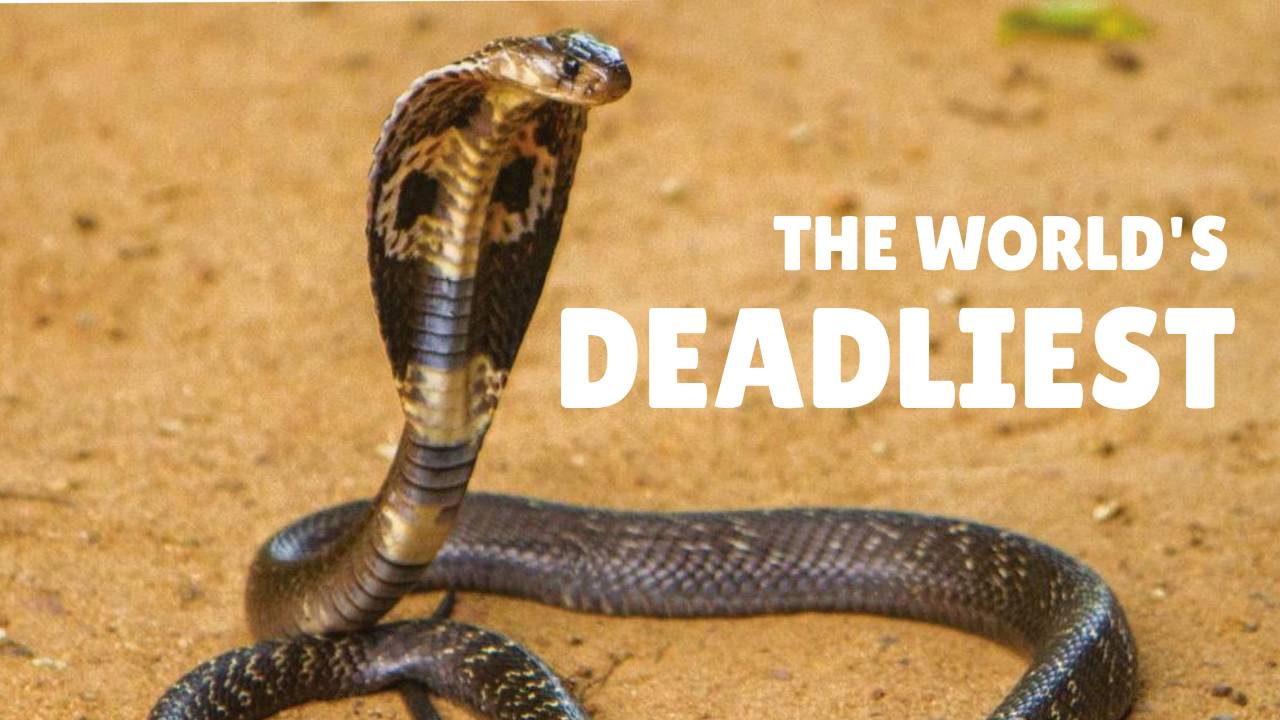July 16 is celebrated as World snake day. It is an important day to spread awareness about the species. There are over 3400 species of snakes with around 600 venomous Snakes in the world. These reptiles look beautiful and scary at the same time.
Some of the snakes are venomous while some do not inflict harm. But, with a low level of awareness, people often believe that all snakes irrespective of their type are venomous. For example, Ratsnake from its appearance may look dangerous as it is over 6 feet, but it is nonvenomous.
Now, after busting this myth, we take a look into the top 5 most venomous snakes in the world below. Let’s dive in!
5 Most Venomous Snakes in the World
1- Inland Taipan (Oxyuranus microlepidotus)

Inland Taipan is also known as Western Taipan, small-scaled snake and fierce snake. It is undoubtedly the most venomous snake in the world. It is found in western Australia and rarely comes in contact with humans. A bite of Inland Taipan generally has a mix of Neurotoxins, Oxylepitoxin, Myotoxins, Nephrotoxins haemorrhagins, Hyaluronidase enzyme. Its one bite is so poisonous that it has enough in it to kill 100 people.
2- Eastern Brown Snake (Pseudonaja textiles)

The number second in our list of most venomous snakes is the Eastern Brown Snake. It is found in Australia and New Guinea. It grows up to 7 feet approximately. Its tongue is dark in color, much like the Black Mamba of Africa. It has a scaled body, similar to Indian Krait. Based on LD50 value, Eastern Brown Snake is considered the second most venomous snake in the world.
Prothrombinase complex sectarian-C is the main content of its venom. It brakes down prothrombin which is essential for blood clotting in the human body. A bite of Eastern Brown Snake in humans will break down their circulatory system resulting in coagulopathy, hemorrhage (bleeding), cardiovascular collapse, and cardiac arrest.
3- Coastal Taipan (Oxyuranus scutellatus)

Coastal Taipan is a cousin of the world’s most venomous snake ⸺Inland Taipan. It is found in the coastal regions of Australia and New Guinea. Coastal Taipan’s lives can be found in a wide range of habitats, from monsoon forests to woodlands. Unlike Inland Taipan, the Common Taipan (Coastal Taipan) can come near the human habitat and agricultural farmlands. It generally avoids confrontations with humans, but if provoked can become highly aggressive. The venom of Coastal Taipan has toxins that are mainly neurotoxic and coagulopathic.
4- King Cobra (Ophiophagus Hannah)

The appearance of this snake is deadly and deceptive. King Cobra is the most venomous snake in Asia, especially in the subcontinent. An adult King Cobra can grow up to 20 feet and thus it is the longest venomous snake in the world. In northern, and eastern India, King Cobra is the predominant snake species. It is also associated with Hindu mythology. King Cobra preys on other small snakes, lizards, and banded Krait.
Kind Cobra is generally not considered aggressive as it avoids humans. It can however become aggressive to defend itself, its eggs. It raises the front part and hood and hisses loudly when comes in the attack mode. King Cobra bites have powerful neurotoxic venom and one bite can result in death within 30 minutes unless antivenom is given to the victim.
5- Black Mamba (Dendroaspis polylepis)

Black Mamba is responsible for a large number of snake-related deaths in sub-Saharan Africa. From its appearance, Black Mamba looks scary. The black mamba’s inky mouth is enough to get humans excited. Black Mamba is fast and can run at a speed of 19kmph. When threatened it spits venom up to 2 m. It avoids humans. But when provoked, it quickly becomes aggressive. Black Mamba feeds on birds, rodents, bats, and bush babies.
Interesting facts about most venomous snakes in the world
- Most venomous snakes have Neurotoxins poison which directly affects the nervous system.
- Inland Taipan is the most venomous snake as per its LD50 value. But it is not considered dangerous as it rarely comes towards human habitat.
- Black mamba spits venom up to 2 m
- Snakes irrespective of their species are harmless. They attack only when provoked or threatened.
- Snakes are vertebrates ― animals with bones. In total, snakes have around 1200 bones and 33 ribs. So, the myth that snakes do not have bones is completely baseless.
- The fact that snakes do not have external ears is true. This makes them as good as the deaf. They however have an inner ear attached to their jaw. It helps them to feel the vibrations and low-frequency airborne sounds.
- Most of the snakes are cold-blooded and ectothermic. They need environmental heat to do their regular activities. During winter they tend to hibernate due to cold.
Also read: 10 Effective Home Remedies to Stop Hair Loss Naturally



